Comparing Graduate and Undergraduate Students Presenting for Counseling
College counseling centers serve the needs of diverse student populations, including students at both the undergraduate and graduate levels. The demands faced by students at these various stages of their academic careers vary, which may result in differences in symptoms and presenting concerns between graduate and undergraduate students. It is also possible that graduate and undergraduate students systematically differ on other demographic identity variables that could lend insight to their presenting concerns. An understanding of potential differences between these groups could help inform the support services provided by academic institutions and college counseling centers. As such, this blog examined the following questions:
- Do graduate and undergraduate students seeking college counseling services differ in their demographic characteristics?
- Are there differences in levels of distress, treatment histories, and threat-to-self symptoms between undergraduate and graduate students when they enter treatment?
- Do graduate and undergraduate students have different presenting concerns assessed by therapists when they initiate services?
The data used for this blog included 12,537 graduate students and 62,687 undergraduate students receiving services from 181 counseling centers during the 2022-2023 academic year. Demographic and academic characteristics were taken from CCMH’s Standardized Dataset Client Information form (SDS). Symptom levels were based on client self report on the Counseling Center Assessment of Psychological Symptoms (CCAPS) at their first counseling appointment. Finally, clinicians’ assessment of presenting concerns were gathered using the Clinician Index of Client Concerns (CLICC), which is completed by providers after an initial appointment with clients.
Do graduate and undergraduate students seeking college counseling services differ in their demographic characteristics?
The graduate student group had a higher percentage of students who identified as international, Asian American/Asian, cisgender, and heterosexual/straight, while the undergraduate group had a higher proportion of students who identified as bisexual, questioning, non-binary, and transgender man. See the table below for more detailed descriptive statistics of the two groups (arrows indicate significant differences between the groups):
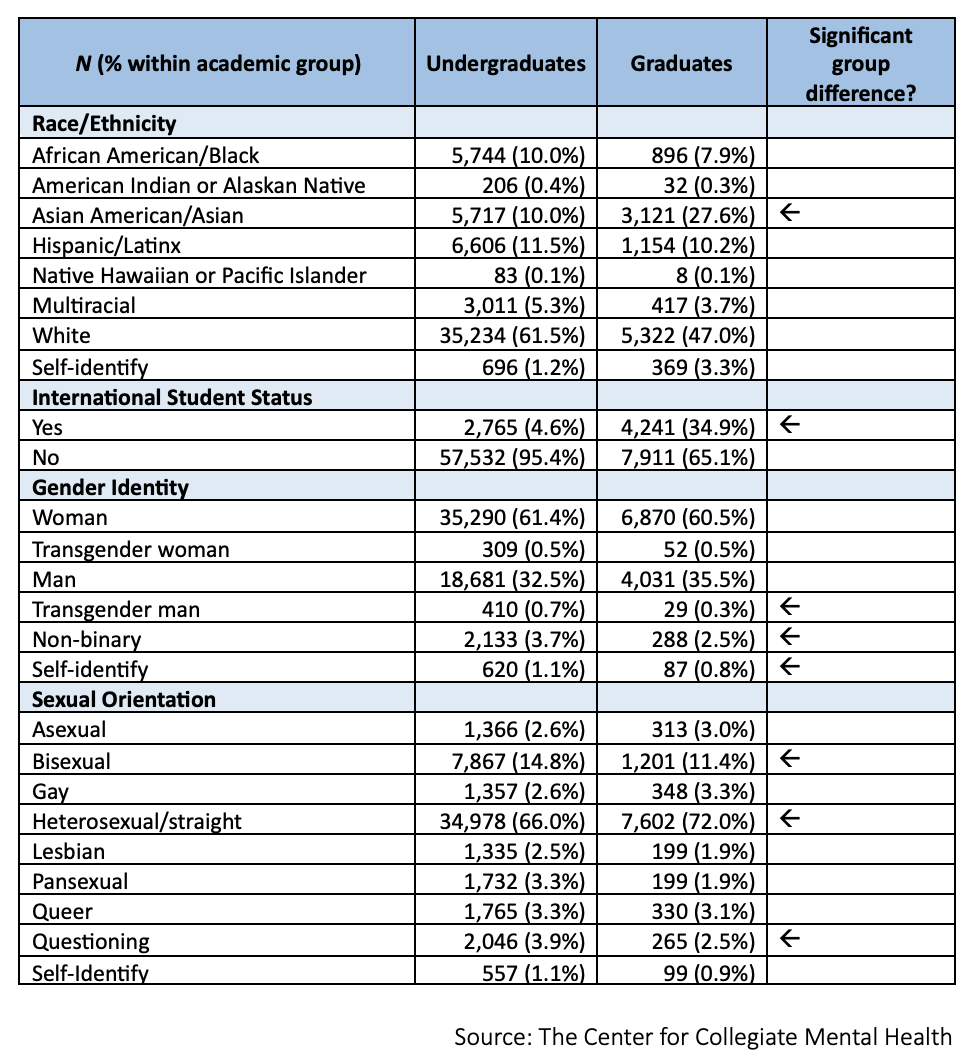
Are there differences in levels of distress, treatment history, and threat-to-self symptoms between undergraduate and graduate students when they enter treatment?
Psychological symptoms (CCAPS-34)
As shown in the figure below, we discovered that undergraduate students endorsed higher distress, on average, than graduate students across all psychological symptoms when they entered college counseling services. While all of the differences were slight or small, the largest discrepancies were in Academic Distress, Social Anxiety, Generalized Anxiety, and overall distress.
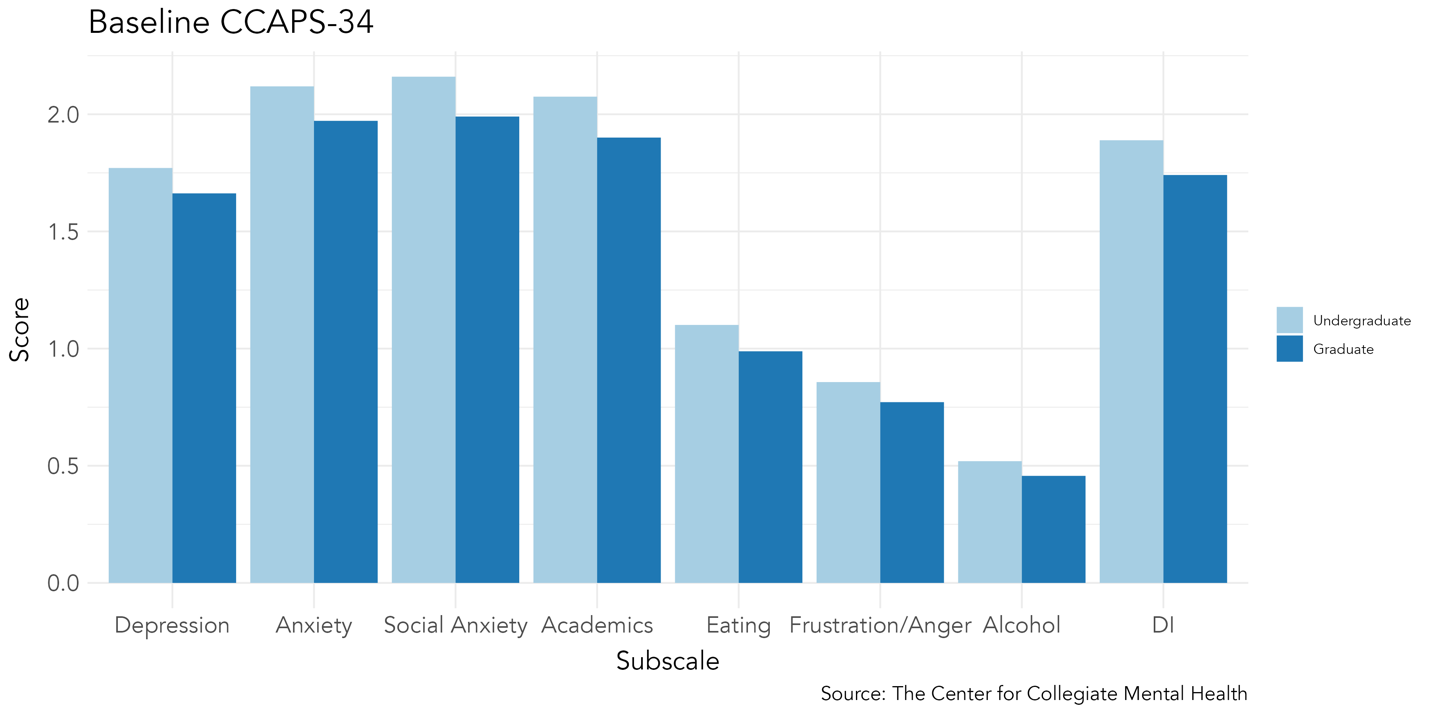
Treatment History (SDS)
We discovered that graduate students, compared to undergraduate students, were more likely to have a history of counseling and psychotropic medication treatment. However, undergraduates were more likely to endorse a history of psychiatric hospitalizations.
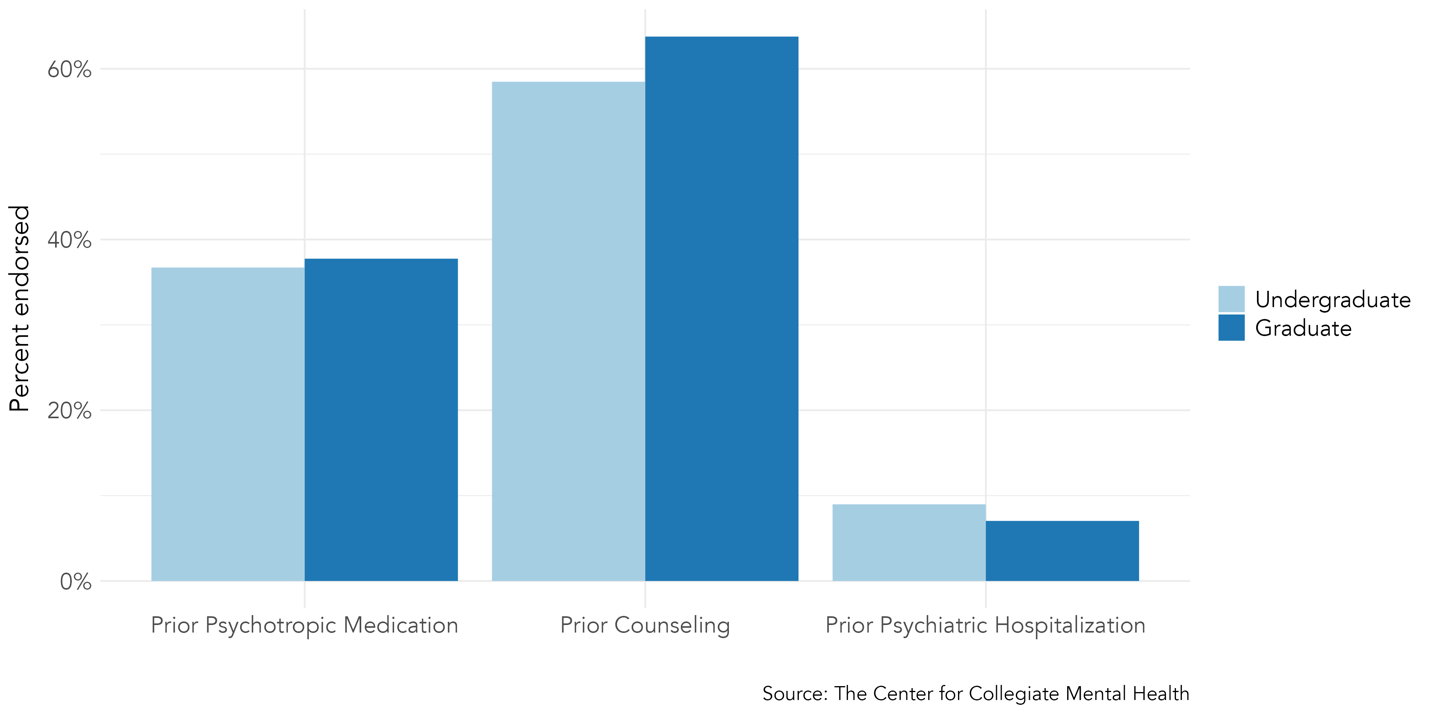
Threat-to-Self Variables (SDS)
We found that undergraduate students, compared to graduate students, were more likely to endorse histories of non-suicidal self-injury, serious suicidal ideation, and suicide attempt(s).
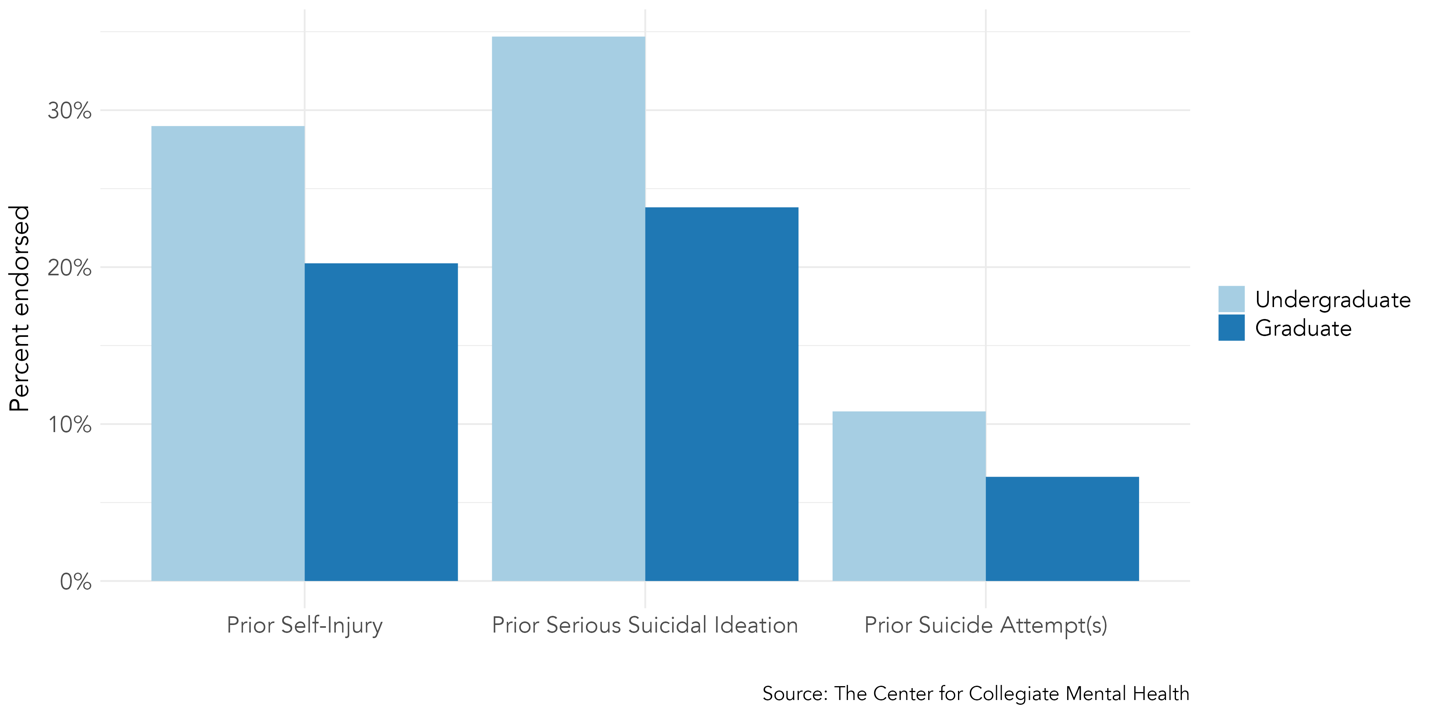
Do graduate and undergraduate students have different presenting concerns assessed by their therapists when they initiate services?
The table below displays the 10 presenting concerns most frequently identified by clinicians as a client’s top/primary concern within the graduate and undergraduate groups. While there are slight differences in primary presenting concerns, overall the composition of the top 10 presenting concerns is identical between the two groups, and the rates of endorsement are similar. In particular, the arrows highlight that four out of the five most common presenting concerns within each group are the same (Generalized anxiety, Depression, Relationship problem (specific), and Stress). For undergraduates, Trauma is included in the top five (ranked 6th for graduate students), and for graduate students, Adjustment to a new environment is included in the top five (ranked 8th for undergraduate students).
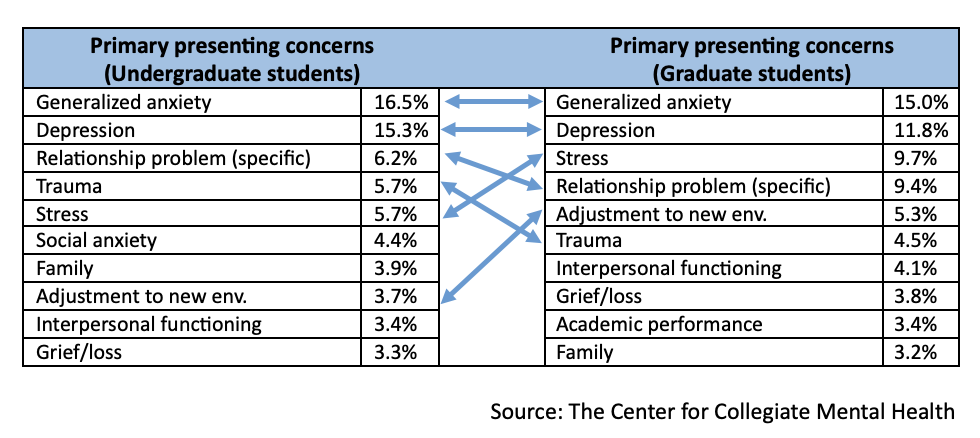
Summary & Implications
The following takeaways are noted:
- Graduate and undergraduate students differ by demographic characteristics:
- The graduate student group had a higher proportion of clients who identified as international students, Asian American/Asian, cisgender, and heterosexual/straight. Clinicians working with graduate students should be aware of these demographic differences between groups and may be interested in another recent blog publications on the social isolation of international students.
- The undergraduate student group had a higher proportion of students with marginalized gender identities (transgender, gender nonbinary, and self-identified) and sexual orientations (bisexual, questioning). Clinicians working with undergraduates should understand these group differences may be interested in findings published in blogs examining clients with diverse gender and sexual orientations identities.
- Clinicians identify similar presenting concerns at comparable rates within both undergraduate and graduate students, however undergraduates generally self-report higher levels of distress than graduate students. Undergraduates were also more likely to endorse a history of threat-to-self risk symptoms (prior psychiatric hospitalization, non-suicidal self-injury, serious suicidal ideation, and suicide attempt(s)) than graduate students.
- Graduate students were more likely to report a history of counseling and psychotropic medicate use, while undergraduates were more likely to disclose a history of a psychiatric hospitalization.
- Overall, undergraduate and graduate students generally enter college counseling centers with similar presenting concerns and intensity of symptoms with small differences between them. Clinicians may expect to see slightly higher distress and histories of threat-to-self characteristics in the undergraduate student clients they treat, while the graduate student clients might be more likely to have prior experiences in routine outpatient counseling and psychiatric services. This has implications for the initial evaluation and treatment planning process when students initiate services, as clinicians should be particularly vigilant about risk assessment with undergraduate students, while they might be more likely to incorporate graduate students’ learned experiences during previous services in the treatment plan, given their increased likelihood of prior mental health care.
This blog post was written by CCMH Business Team member, Natalie Pottschmidt, M.S. Natalie is a Doctoral Student in Clinical Psychology at PSU and a part of the Castonguay Lab.

